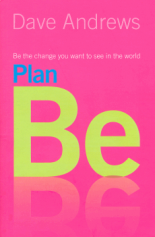The Tank, The Cross And Easterfest: On Confusing ANZAC With EASTER.
Dave Andrews
Easterfest is on again this year.
Easterfest is Australia’s largest Easter festival, which as the promo on the websites says, is ‘not just AT Easter, but ABOUT Easter!’
Easterfest draws tens of thousands of people from across Australia, who make the pilgrimage up the mountain range to the beautiful regional garden city of Toowoomba.
For four days ‘some 200 artists from across the world perform on stages in Queen’s Park, as well as cafes, restaurants, pubs, theatres, shopping centres and churches, with music of every kind. From jazz to heavy metal, from acoustic folk to indie pop, from blues, funk and soul to good old rock and roll’.
In and out and around these performances there are presentations by high-profile Christian speakers at the Forum sponsored by the Bible Society. Some time ago the Bible Society had asked me to present ‘Plan Be’ – my take on the Beatitudes as a radical personal-political framework for the blessed nonviolent revolution of Jesus.
I returned to Easterfest the next year with no expectation of playing an up-front role. I was there solely to support my wife Ange, and be her back-up, while she was holding her Lastfirst Fair-Trade / Fair-Go stall. However, before this weekend was over, I would unexpectedly find myself very much in the spotlight.
I had helped Ange set up her stall and decided to go for a stroll around the festival to look at what other organisations, such as Compassion, Destiny Rescue and Just Motivation were doing to bring a focus on social justice issues that Easterfest organisers said ‘cannot be separated from the message of Easter.’
As I was wandering around I came across a military tent with a tank parked outside. Not a water tank – which are common in our parched part of the world; but a war tank – a heavily-armoured iron-clad fighting vehicle, designed for frontline combat, mounted on all terrain tracks, carrying a large-calibre machine gun.
I was shocked to see a big brutal fire-power fighting vehicle on display at an event which was ‘not just AT Easter, but ABOUT Easter!’ and talked with the man in uniform who was in charge of the display about it.
‘G’day mate’. I said in a friendly voice. ‘Could you tell me why you have a tank on display here?’
‘The Easterfest organisers invited me to put it on display’ the man said, ‘as it’s an instantly-recognizable eye-catching symbol of ANZAC, and the ANZAC story powerfully illustrates the Easter story of sacrifice’.
I was gobsmacked. How could anyone think that the ANZAC story and the Easter story were the same?
But rather than react, I accepted his invitation to watch his documentary on ANZAC. ANZAC stands for Australian and New Zealand Army Corps, whose soldiers were known as Anzacs.
When war broke out in 1914 the Anzacs went to war in Europe in support of the British Empire. The documentary told the story. ‘In 1915, Australian and New Zealand soldiers formed part of an Allied expedition that set out to capture the Gallipoli Peninsula, according to a plan by Winston Churchill to open the way to the Black Sea for the Allied navies. The ANZAC force landed at Gallipoli on 25 April, meeting fierce resistance from the Ottoman Army commanded by Mustafa Kemal (later known as Atatürk).
What had been planned as a bold strike became a stalemate, and the campaign dragged on for eight months.
‘At the end of 1915, the Allied forces were evacuated after both sides had suffered heavy casualties and endured great hardships. The Allied casualties included 21,255 from the United Kingdom, an estimated 10,000 dead soldiers from France, 8,709 from Australia and 2,721 from New Zealand.
News of the landingat Gallipoli made a profound impact on Australians and New Zealanders at home and 25 April quickly became the day on which they remembered the sacrifice of those who had died inthe war. The creation of what became known as an “Anzac legend”became an important part of our national identity.’
I had lots of problems with the way the story was told. It glossed over the fact that it was an imperial war that we should have had no part in; that it involved us in an unethical preemptive strike; that it implicated us in the illegal invasion of another country; and that we slaughtered 87,000 Turks at Gallipoli. But in the midst of the slaughter, there were no doubt many examples of heroic self-sacrifice – like Simpson.
So I said to the attendant: ‘I’m sure there were many examples of heroic self-sacrifice at ANZAC cove. But if it is sacrifice, not slaughter, that you want to commemorate, wouldn’t it better to have a statue of Simpson and his donkey rather than that bloody tank? After all it was Simpson, a stretcher bearer, who commandeered a donkey, wrapped a red cross around its muzzle, and rescued wounded diggers under fire for three and a half weeks until he was killed, who was a real Christ-figure at ANZAC cove.’
‘Maybe you’re right.’ He said. ‘But I was asked to bring the tank, so I brought the tank.’
I thanked the attendant and went back to Angie’s Lastfirst Fair-Trade / Fair-Go stall to take her a coffee and have a chat about what I should do about the tank. I was deeply disturbed that the organisers had thought that a heavily-armoured iron-clad combat machine, designed to kill people – not to give life, but to take life – was a suitable symbol for Easter, that would somehow communicate the message of Easter.
Overnight I wrote a short flyer about my concerns of having the tank at Easterfest; and the next day gave out my flyers with an invitation for people with similar concerns to meet around the tank early Easter Sunday morning to reflect on the significance of the tank as distinct from the cross as a symbol of Easter.
Most people ignored me. Not many wanted to engage in conversation about the tank. They were too busy enjoying themselves. Which was to be expected. It was a music festival. Not a semiotics seminar. A few people took the flyers. Some said they’d come on Sunday. But most people hurried on to the next gig.
However, even though my actions didn’t get much attention, my ‘potentially disruptive activities’ must have been reported to the management. Because it wasn’t long before a couple of broad-shouldered security guards showed up, ordered me to desist and directed me to come with them to the main office.
The manager, Isaac Moody, introduced himself and asked me to sit down. Then, very politely, asked me why I was trying to ‘make trouble’.
I assured him I wasn’t trying to ‘make trouble’. If I wanted to ‘make trouble’, I told him, I could do a much better job.
But, he said, you’re organizing ‘a demonstration’.
No, I said, I was only organizing ‘a conversation’ – about the presence of a tank at Easterfest.
But, he said, you’re ‘causing division’.
No, I said, in point of fact you are ‘causing division’, because you arranged for the tank to be an exhibit at Easterfest, even though the military man warned you it would be contentious.
Okay, Isaac conceded, you may have a point. But, given the fact, it is contentious, and a public debate about the presence of the tank at Easterfest has the potential to ferment a significant level of discontent, if not a completely unprecedented level of disruption, he said, I’d appreciate if you held the conversation off site, rather than holding it on site.
I told him that I would be very happy to do that on one condition – that he would agree to meet with me after the festival to discuss the matter face to face. And he agreed.
So we held the public discussion about the tank that Easter Sunday in a local public bar. I asked people what they thought about the significance of the tank, as compared to the cross, as a symbol for Easter.
Some of us thought it was blasphemous, because they said the tank stood for slaughter, the killing of enemies, whereas the cross stood for sacrifice, a willingness to die to save friend and foe alike.
We thought it was outrageous that Christians confused the two – and mistook one for the other – as if the inherent violence of the one was the same as the inherent nonviolence of the other.
Others of us thought it was ironic, because even though the cross was once a sign of Christ’s commitment to nonviolence and sacrifice, since Constantine Christians have taken the cross and used it has a blood-thirsty battle-banner under which they sent in the troops, in recent wars accompanied by tanks, to perpetrate terrible acts of violence and slaughter.
And we thought it was tragic that, as a result of confusing ANZAC with Easter, Christians supported the Allies’ invasion of Iraq, even though it was clearly an illegal and unjust war, based on a lie, and has led to the death of over half a million Iraqis.



